Yuma Territorial Prison is one of those places that instantly transports you back in time. Perched on a bluff above the Colorado River in Yuma, Arizona, this historic site once held some of the West’s most notorious outlaws—and today, it’s one of the most fascinating places you can explore in the Southwest.
Between 1876 and 1909, over 3,000 prisoners—including 29 women—served time in this scorching desert facility. The crimes ranged from murder to polygamy, but grand larceny was the most common. While its nickname, the “Hell Hole,” paints a grim picture, Yuma Territorial Prison was actually ahead of its time in some surprising ways.
This post contains affiliate links. As a participant in Amazon Associates and various affiliate programs, we are compensated when qualifying purchases are made through our referral links at no additional cost to you. Full Disclosure
A Bit of Backstory
Yuma became the county seat of Yuma County in 1871, and just four years later, the Arizona Territorial Legislature approved funding for the prison. Construction started with a modest $25,000 budget, and on July 1, 1876, the first seven inmates walked into the brand-new facility they helped build themselves.
For the next 33 years, the prison housed convicts in rock and adobe cells under brutal desert conditions. Eventually, overcrowding forced the transfer of all inmates to a new facility in Florence, Arizona, in 1909.
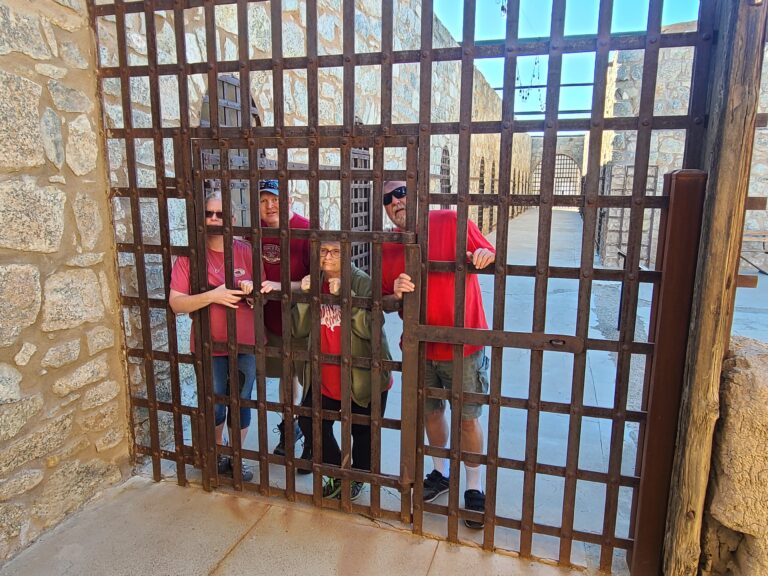
Touring the Yuma Territorial Prison Today
Walking through the Yuma Territorial Prison is a surreal experience. The main gate, cells, and guard tower still stand, preserving the eerie atmosphere of the Old West. You can step into the original cell blocks, peek through heavy iron bars, and imagine what daily life was like for those who served time here over a century ago.
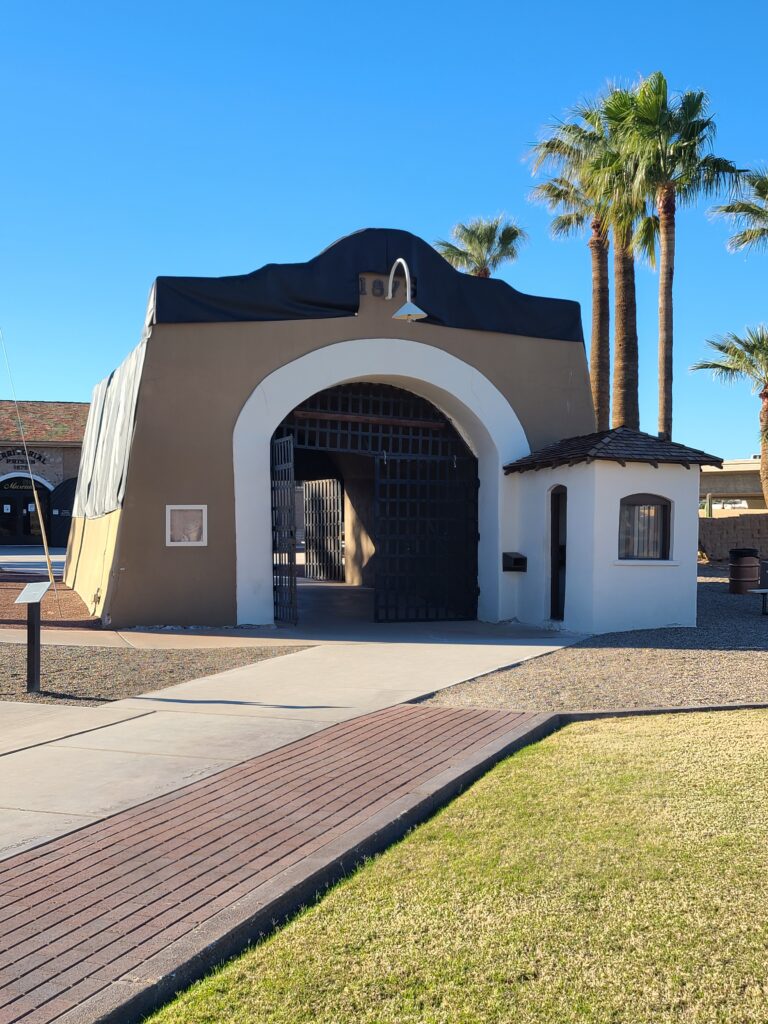
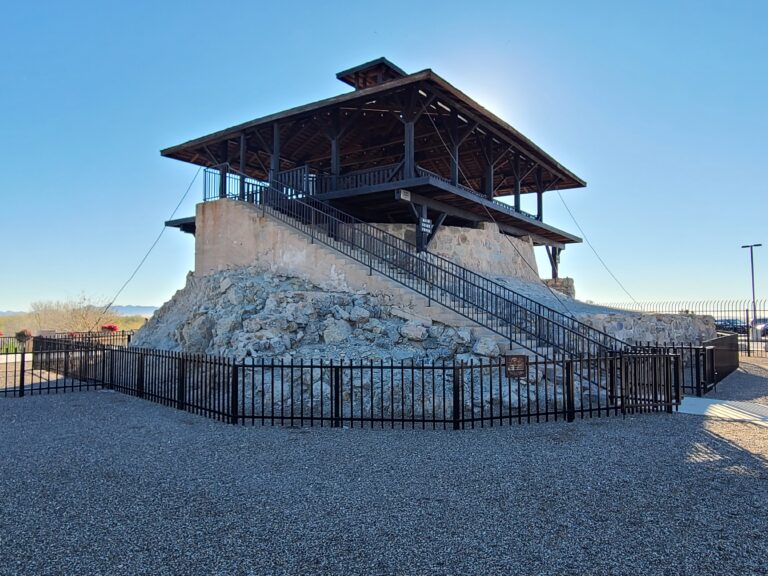
The cells themselves are sobering. Six prisoners per cell meant tight quarters and little privacy—especially in the sweltering Arizona heat. The mugshot station, complete with a special mirror that captured both front and profile views, gives a glimpse into how early law enforcement documented criminals.



And then there’s the infamous Dark Cell. This pitch-black punishment chamber was reserved for the worst troublemakers. Inside a metal cage just 5 feet high and 10 feet long, inmates were locked behind two solid steel doors, with only a tiny ceiling vent letting in the faintest trace of light. It’s one of the most haunting parts of the prison tour.
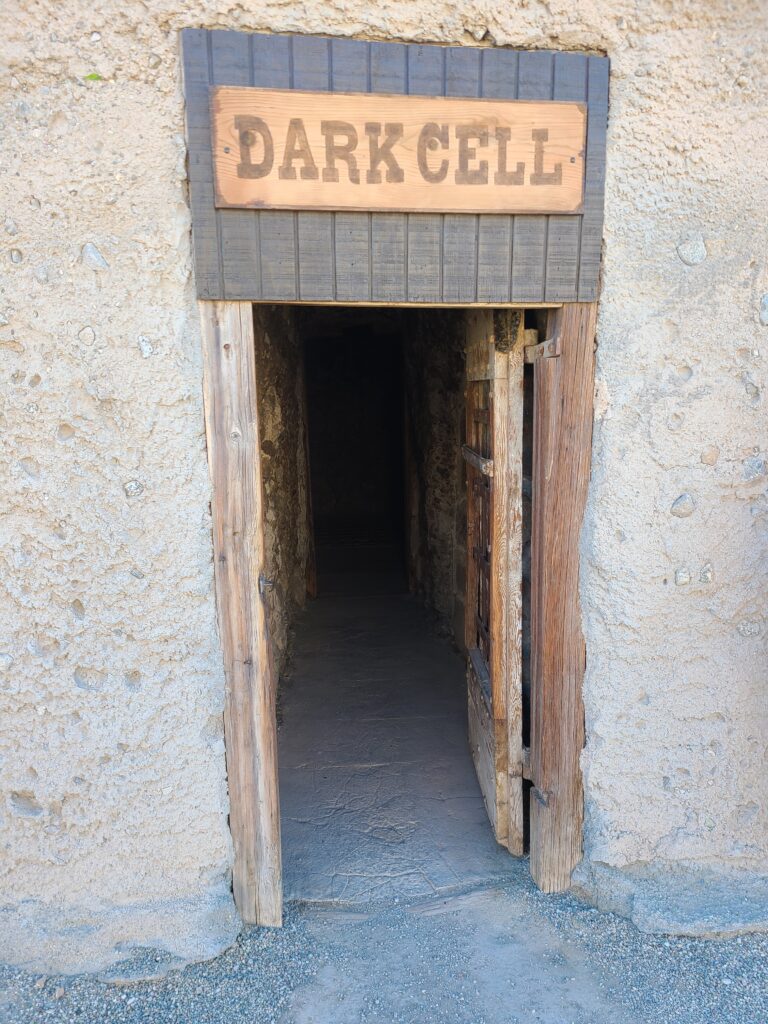
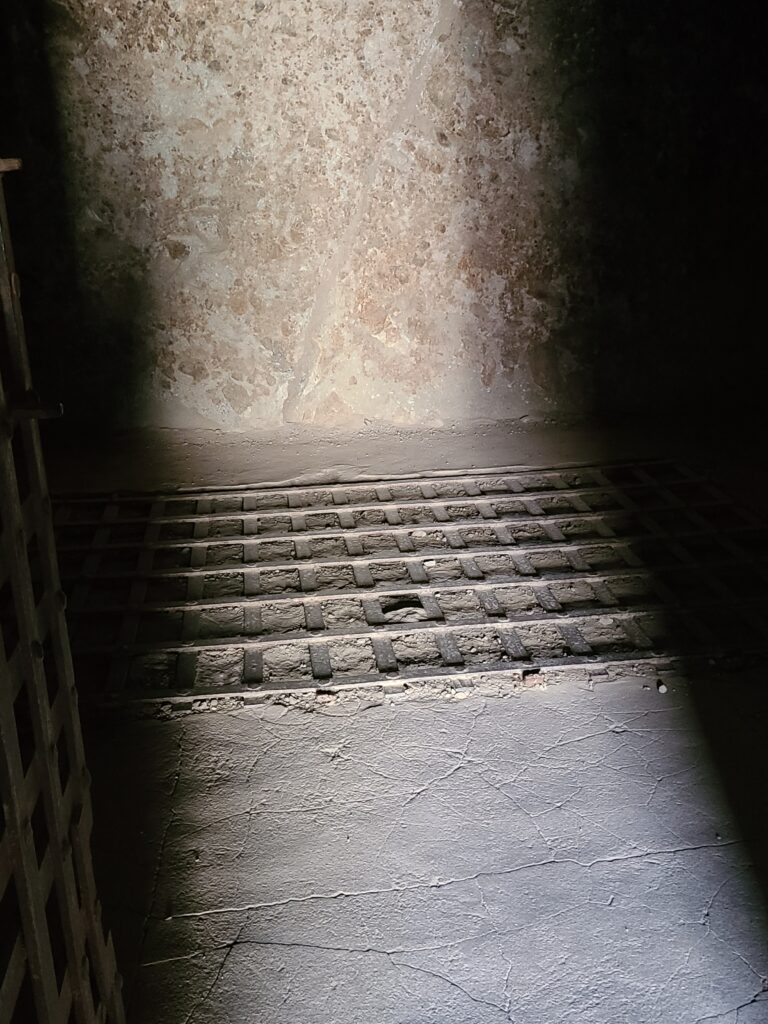
Despite the harsh conditions, the prison was surprisingly progressive for its time. It boasted amenities most homes in Yuma didn’t have—electricity, forced ventilation, running water, three flushing toilets (the only ones in town), and even a library with over 2,000 books. Locals sarcastically dubbed it the “Yuma Country Club.”
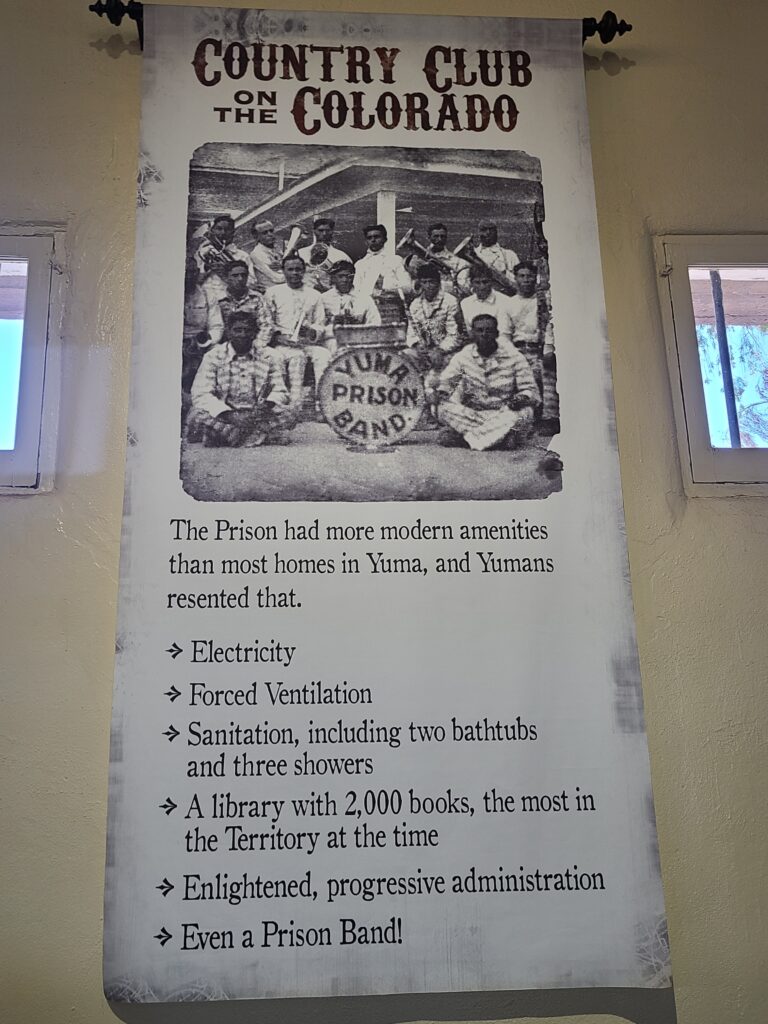
Other unexpected highlights:
- A prison band made up of inmates
- Access to hot showers and bathtubs
- A focus on sanitation and rehabilitation, unusual for the time
Whether you’re a history buff or just passing through, the Yuma Territorial Prison is an unforgettable stop. It’s not hard to see why it’s one of Arizona’s top historic attractions.
Travel Tips for Visiting Yuma Territorial Prison
Best Time to Visit:
October through March is ideal. Summers in Yuma can be brutally hot, often hitting triple digits.
RV Parking:
There’s ample parking for Class A rigs and tow vehicles in the lower lot. Arrive early during snowbird season.
Pet Policy:
Leashed pets are welcome in outdoor areas but not inside the museum. Be mindful of hot pavement in warmer months.
Accessibility:
Most of the park is wheelchair accessible, but some original stone pathways are uneven. Wear sturdy shoes.
Nearby Attractions:
- Historic Downtown Yuma – Just minutes away, great for food and shopping
- Ocean-to-Ocean Bridge – A scenic photo op right near the park
- West Wetlands Park – Perfect for a picnic or stretch after touring

Recommended Gear:
- Wide-Brim Sun Hat – A must for desert touring
- Stainless Steel Water Bottle – Keeps drinks cold all day
- Lightweight Hiking Shoes – Comfortable and breathable
- Compact Travel Camera Tripod – Great for low-light cell block shots
- Old West History Book – “Arizona Outlaws and Lawmen” – Read up before or after your visit
💡 Tip: If you’re into Old West history, pair this stop with Tombstone or Bisbee for a deeper dive into Arizona’s lawless past.
Celebrity Criminals and Tombstone Connections
One of the things I love about visiting places like the Yuma Territorial Prison is how they often tie into other historic stops we’ve visited. In this case, there’s a direct connection to Tombstone, one of Arizona’s most legendary Wild West towns.
The prison’s most famous male inmate was likely Buckskin Frank Leslie, a colorful and deadly character who spent time in Tombstone during the same era as Wyatt Earp and Doc Holliday. Leslie ended up at Yuma after being convicted of murder, adding another chapter to his already notorious story.
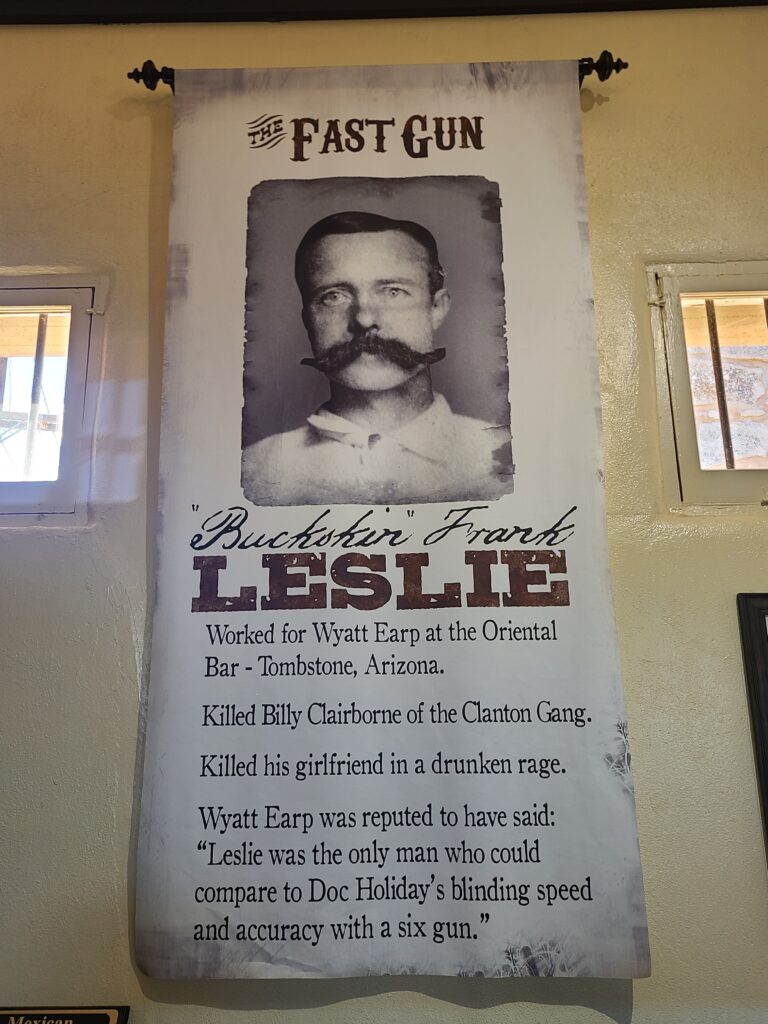
And the connections don’t stop there. John Behan, the former Sheriff of Cochise County and a political rival to the Earps, later served as the Superintendent of the Yuma Territorial Prison. It’s fascinating to see how these infamous figures crossed paths and left their marks on Arizona history.

Yuma also imprisoned women, and one of the most famous female convicts was Pearl Hart—the last known stagecoach robber in Arizona history. She became somewhat of a folk hero after her arrest in 1899 and served time at Yuma before being pardoned.


If you’re a fan of the Old West like I am, these tie-ins really bring the place to life. The Yuma Territorial Prison isn’t just a site frozen in time—it’s a hub where many of the threads of Arizona’s lawless past come together.
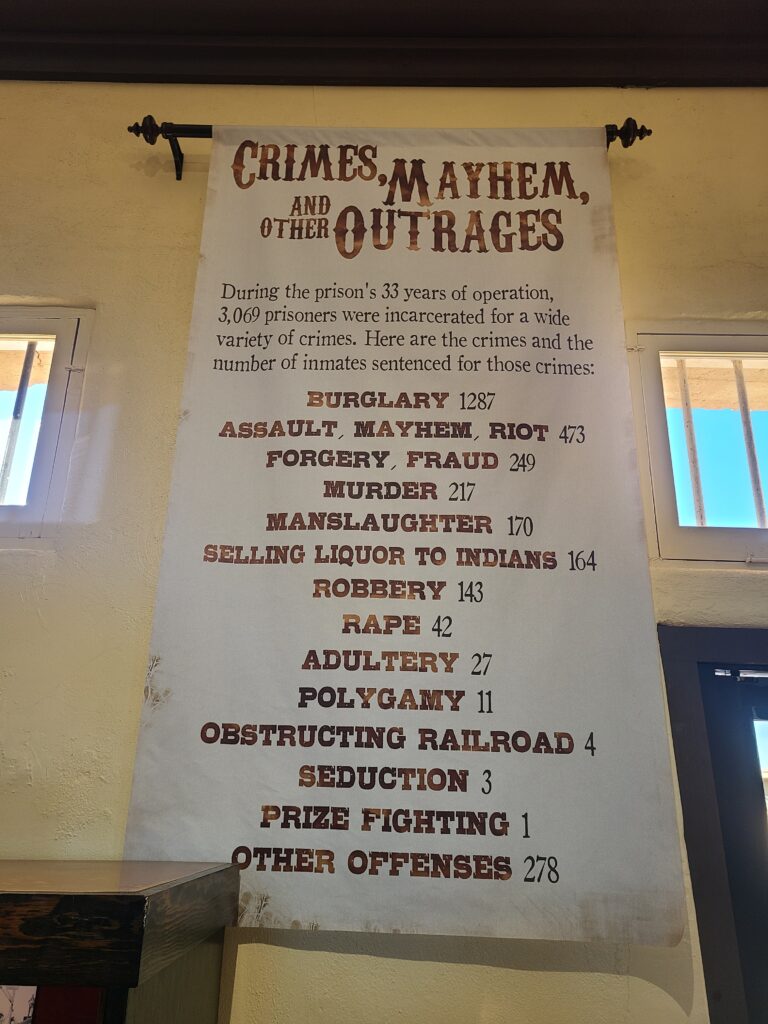
Yuma High School – Home of the Criminals
After the prison officially closed in 1909, the story of the site didn’t end there. In 1910, the empty cell blocks found new life—as a high school.

Yuma Union High School temporarily moved into the abandoned prison and operated there until 1914. Students attended classes in the former cell blocks, and school assemblies were held in the old prison hospital. Imagine taking a math test in a jail cell!
The most legendary part of this chapter? In 1913, the Yuma High football team traveled to Phoenix and beat the “Coyotes.” The Phoenix players, frustrated by the loss, mockingly called Yuma’s team the “Criminals.” Instead of taking offense, the students embraced the name.

By 1917, the Yuma school board made it official. To this day, Yuma High School proudly goes by the nickname “Criminals”—the only school in the country with such a moniker. The mascot? A hardened convict in classic black-and-white stripes. It’s a fun and quirky piece of legacy that connects modern Yuma students to the town’s rough-and-tumble past.
Visiting Yuma Territorial Prison State Historic Park

If you’re traveling through southern Arizona, this historic site is well worth the stop. The park is located on a scenic bluff above the Colorado River, just minutes from downtown Yuma. It’s easy to get to, has plenty of parking (including room for RVs), and offers a great mix of indoor exhibits and open-air exploration.


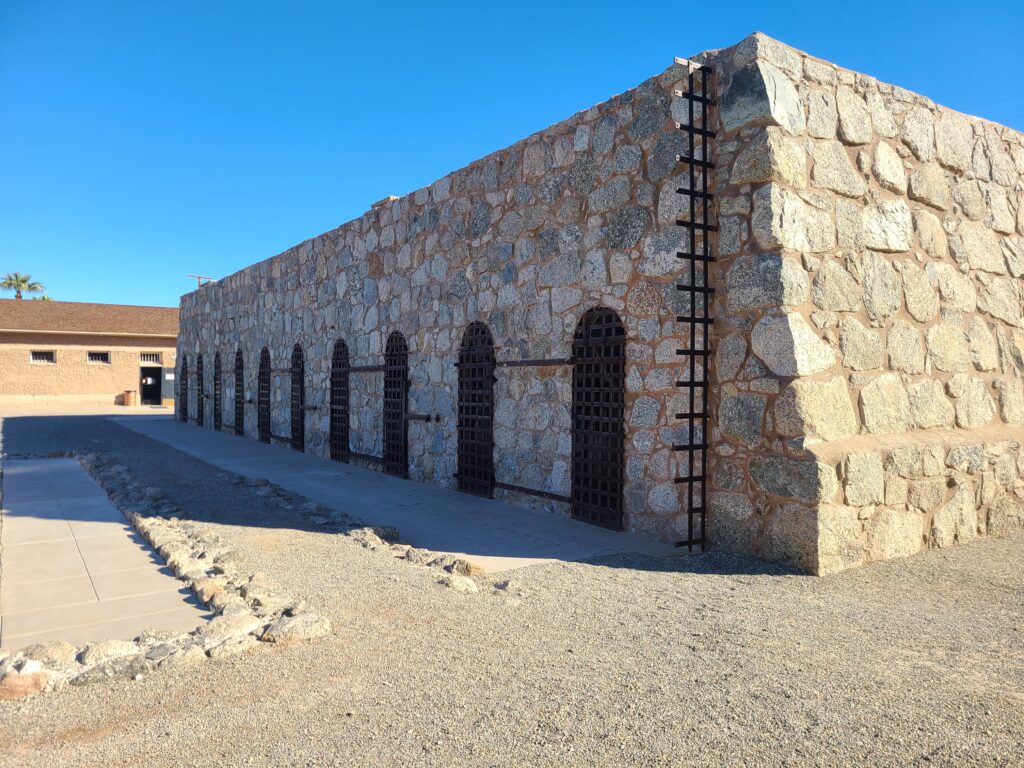
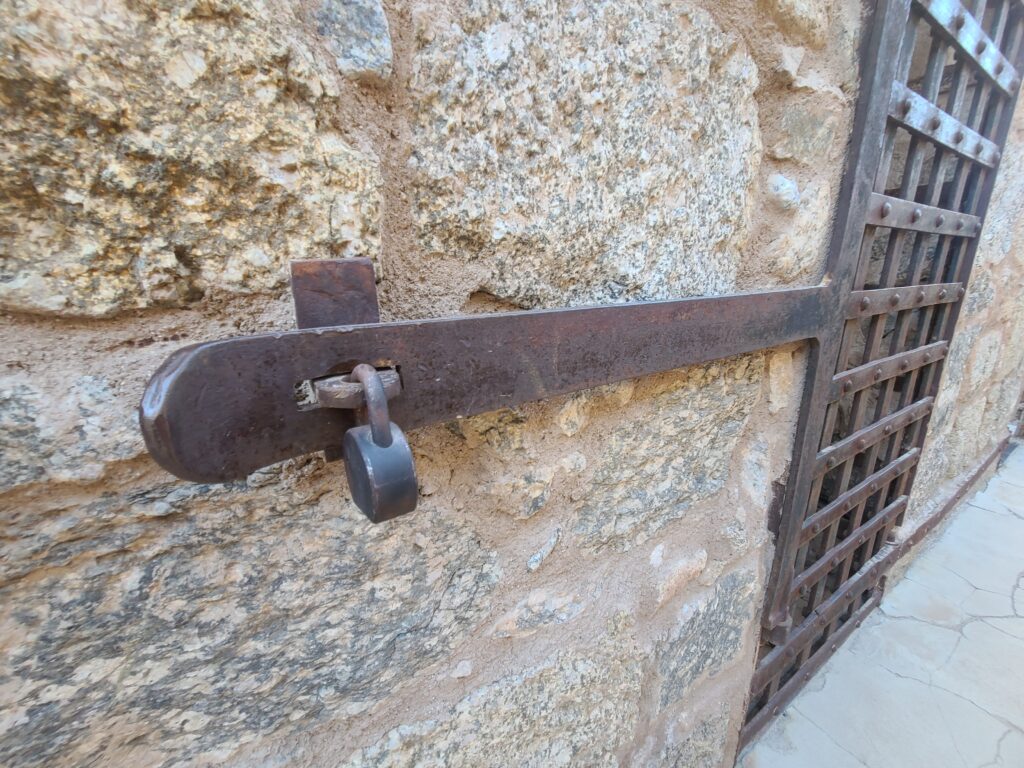
Location:
220 N Prison Hill Road, Yuma, AZ 85364
Just take the Fourth Avenue exit from I-8 and follow the signs. After crossing the river, the entrance is on your left.

Hours of Operation:
Yuma Territorial Prison State Historic Park is open seven days a week year-round, making it a convenient stop no matter when you’re passing through.
🕒 Summer Hours (June 1 – September 30):
8:30 a.m. – 4:00 p.m.
🕒 Winter Hours (October 1 – May 31):
9:00 a.m. – 4:30 p.m.
Arrive early to beat the heat during the summer months, especially if you’re planning to explore the outdoor areas of the prison grounds. The museum and gift shop are climate-controlled and a welcome break from the sun.
Admission Fees:
- Adults: $10
- Seniors (62+): $9
- Children (ages 7–13): $5
- Children 6 and under: FREE
Accessibility & Amenities:
- Clean restrooms on site
- Informational plaques and exhibits throughout the grounds
- A small gift shop and visitor center
- Pet-friendly (on leash)
- Easy walking paths, though some areas are uneven due to the original stonework
Even though much of the original structure has been lost over the years—thanks to scavenging townsfolk, floods, and fire—there’s still plenty to see. You’ll find original cell blocks, the iconic guard tower, the sally port entrance, and even parts of the old yard. The restoration efforts have been thoughtful, with interpretive signs that paint a vivid picture of life in Arizona’s earliest prison.

Final Thoughts
Yuma Territorial Prison offers more than just a look into outlaw history—it’s a deep dive into Arizona’s rugged past, with stories that are stranger (and more entertaining) than fiction. Whether you’re a history lover, Old West fan, or just looking for a memorable stop while RVing through Arizona, this place delivers.
Lisa and I found it fascinating, and I’d absolutely recommend it to fellow full-timers, especially if you’re already making a loop through places like Tombstone, Bisbee, or Florence.
Thanks for reading! Have you been to the Yuma Territorial Prison? Got a favorite Old West destination you think we should check out? Drop your thoughts or questions in the comments—we’d love to hear from you.
If you’re looking to build your own home-based business like we have with this webpage, check out Wealthy Affiliate.
Wealthy Affiliate is an all-in-one platform that you can build your whole affiliate marketing business on. It combines training, software, and website hosting into one. This makes the whole process of starting an online business from scratch much easier, especially if you’re new to building a website.


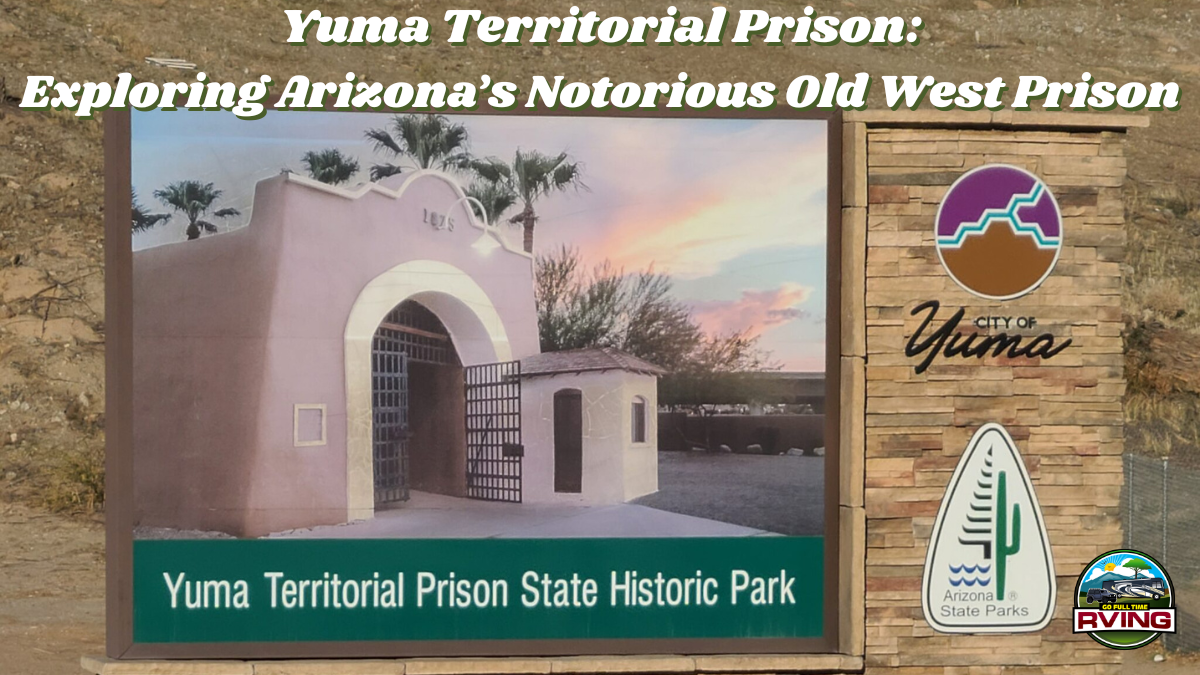


I was there in 1965 on a family vacation from California My father’s father was from Yuma so we had to check out all the sites…I have never gone back but reading this article has made me want to very soon.. will be curious to see how much is intact from when I saw it in the mid 60’s
Hi Jenny, It is a really cool place. It’s someplace I would go back to next time we’re in Yuma. Best Wishes, Rob